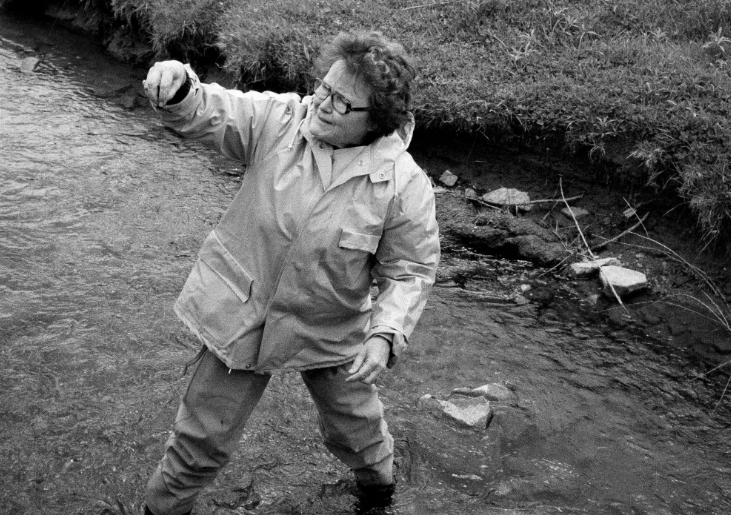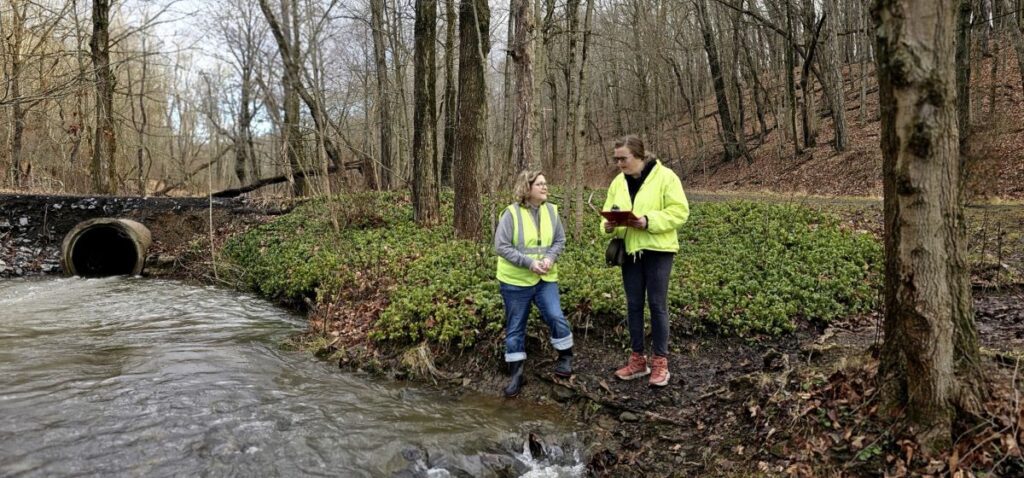Mar 04 Women’s History Month – Ruth Patrick’s Legacy and Our Commitment to Stream Ecology
In the realm of ecological science, few names shine as brightly as that of Dr. Ruth Patrick. A trailblazer in the field, Patrick’s groundbreaking work laid the foundation for our understanding of freshwater ecosystems. Ruth Patrick was once called “a den mother for generations of scientists and a visionary ecologist, a champion of environmental protection, as well as a mentor and inspiration for future scientists for more than seventy years.” [1]
As we continue our mission to strengthen the health and vibrancy of our community by improving, conserving, and restoring Allegheny County Parks, we find inspiration in the life and achievements of Ruth Patrick, particularly in her contributions to stream ecology. Our work would not be possible today without her work as a scientist, as an educator or as a woman who fought for opportunities for other women in the sciences like Rachel Carson, or the Park Foundation’s own Nicole Oeler. To celebrate Women’s History Month, we want to honor Ruth Patrick’s legacy and share her inspiring impact on freshwater streams, including the waterways in your nine county parks.

A Pioneer in Stream Ecology
Dr. Ruth Patrick dedicated her life to the study of aquatic ecosystems, particularly freshwater environments like rivers and streams, studying over 200 waterways throughout the Americas. Born in 1907, she was a young girl who fell in love with nature thanks to her father’s love of botany and her own curiosity. Her family was known to walk through their neighborhood park collecting specimens to observe with their microscope at home.
As an adult, she became a pioneering scientist, ecologist, educator and limnologist (scientist of fresh-water systems), making significant contributions to science throughout her long and impactful career. She is best known for her work with diatoms (algae encased in a glasslike shell) and was the first scientist to diagnose the health of a river or stream by the plant life and animal species present. She was also the first person to demonstrate that biological diversity can measure environmental impact using aquatic organisms as indicators of environmental health. The Patrick Principle, which states that the best way to assess the health of an ecosystem is by measuring its species diversity and abundance, continues to influence modern stream ecology and conservation practices to this day.
Patrick taught for 35 years and wrote over 200 scientific papers, including “The Rivers of the United States”. In 1996, she received the National Medal of Science and in 2009 she was inducted into the National Women’s Hall of Fame. In 2002, she was a recipient of the Heinz Awards Chairman’s Medal, in memory of Senator John Heinz from Pennsylvania.
At different times throughout her career she served on the governing boards of Pennsylvania Power and Light, the World Wildlife Fund and was the first woman and first environmentalist to serve on the Board of Directors for DuPont Company. She was an advisor to President Lyndon Johnson on water pollution and President Ronald Reagan on acid rain. In the 1960’s she helped draft the legislation that became the Clean Water Act.

Connecting Streams to Community Health
Our work within Allegheny County Parks involves a deep commitment to the health of our land and waterways. Projects like our Ecological Assessments and Action Plans and our Stream Studies help us to make informed decisions on project selections and allow us to listen to the ecology of nature within the parks to ensure we are promoting healthy biodiversity, water quality and overall ecological balance.
In our commitment to improving, conserving, and restoring Allegheny County Parks, we draw inspiration from Patrick’s innovative approach as we strive to create environments that echo Patrick’s vision of harmonious and thriving aquatic ecosystems. Healthy streams within our parks contribute not only to the preservation of local flora and fauna but also to the well-being of our community. Accessible and well-maintained stream environments offer spaces for recreation, reflection, and connection with nature—essential elements for the health and vibrancy of our community.

As we navigate the path of ecological stewardship within Allegheny County Parks, we honor the legacy of Ruth Patrick. Her pioneering spirit and dedication to understanding and preserving freshwater ecosystems serve as a guiding light for our work in stream ecology. By weaving her principles into our mission, we aim not only to improve, conserve, and restore our parks but to contribute to the greater health and vibrancy of our community—a vision that aligns seamlessly with Patrick’s enduring legacy.


